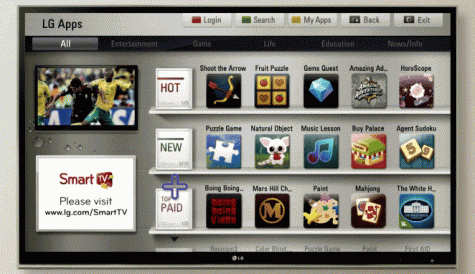IBC 2011 Q&A: Steve Davi, SVP advanced technology SeaChange International
Steve Davi, senior vice-president of advanced technology at SeaChange International, spoke to DTVE IBC Update to discuss the company’s plans for the show.
 What has been the most significant development in pay TV technology since last year’s IBC?
What has been the most significant development in pay TV technology since last year’s IBC?
We’ve continued to see numerous operators and content providers introduce or expand multi-screen services to deliver content beyond the traditional set-top, such as Virgin Media in the UK and StarHub in Singapore. While many of the early versions of those services were running in parallel to the set-top service, the industry, as expected, is beginning to blend those services to make the delivery architecture as well as the consumer experience much more congruent from platform to platform.
What is the biggest challenge currently facing the industry?
One of the biggest challenges the video industry faces is how to most effectively prepare, protect and monetise the sheer volume of content that is being delivered as a result of the rise of multi-screen services. Not only has the amount of available content in general increased; each individual asset must now be prepared in multiple versions to ensure an optimal viewing experience on various screens. In order to keep that content secure and prevent piracy, the industry has a lot of work to do in adopting and implementing security features such as DRM and watermarking that can work across platforms, networks and devices. Last but certainly not least, the industry is addressing the technical and business challenges of monetising all of this content.
What trends do you expect to emerge from this year’s IBC?
This could very well become known as the “social” IBC, as we expect to see a broad range of applications and services that incorporate social media and activities into the video experience. It’s certainly been discussed at length and already demonstrated to an extent, but this IBC may be where the convergence of social media and multi-screen video truly explodes. We’re also expecting to see a good deal of activity related to managing and monetising multi-screen video. This includes workflows and unified back offices to support multi-screen delivery using a single platform along with advertising technologies that enable the management of campaigns and delivery of ads across multiple screens using a single interface.
What will you be highlighting at IBC?
SeaChange is showing a range of technology that allows operators to personalise, manage and monetise multi-screen video. This includes our Nitro multi-screen user interface, which provides consumers with a consistent look and feel as they navigate and manage linear and on-demand content across mobile, PC, tablet and TV screens while also incorporating television and social media with support for “virtual parties,” whereby users can enjoy a common VOD experience from different locations by communicating, sharing commenting and inviting others to participate. SeaChange will also show our Adrenalin multi-screen back-office software, as well as our Business Management Suite, which helps marketing organisations manage offers and catalogues to maximize subscriber use of content libraries.
What are your main goals for the next 12 months?
We are fully committed to helping our existing base of worldwide customers realise the full potential of their SeaChange platforms, and also build upon our current list of multi-screen customers with the launch of even more SeaChange multi-screen services globally.
Do you have any IBC survival tips?
Take full advantage of the tram pass that comes with your IBC registration; plan your conference itinerary with enough time between meetings to navigate the convention centre; and carry good pocket maps of Amsterdam as well as the exhibit halls.
SeaChange will be exhibiting at IBC on Stand 1.C27


